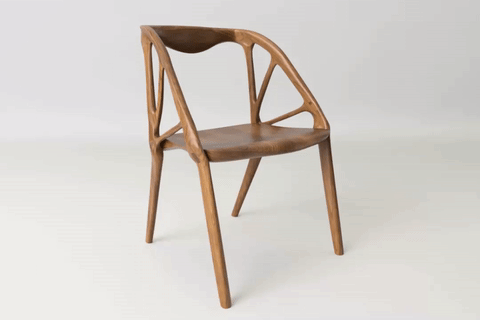Autodesk engineers Arthur Harsuvanakit and Brittany Presten have created a chair – but didn’t design it. They left that part to the company’s Dreamcatcher generative CAD system software.
Recent advancements in artificial intelligence have enabled Autodesk to build Dreamcatcher - software that allows designers to input specific design objectives, including functional requirements, material type, manufacturing method, performance criteria, and cost restrictions into a project. The software then generates a design.

It’s how the Elbo Chair was created.
Harsuvanakit and Presten envisioned a chair to reference the Danish mid-century modern style, so they fed the software a digital, 3-D model of a chair inspired by Hans Wegner’s iconic Round Chair and the Lambda Chair, from the design studio Berkeley Mills. They also told the software they wanted the chair’s seat 18 inches off of the floor, and capable of supporting 300 pounds. The software’s algorithms decided everything else.
Dreamcatcher churned out hundreds of designs, optimizing as it went. It shaved dead weight and adjusted joint placement to improve load-bearing abilities, creating thinner, more intricate structures, Harsuvanakit told Wired.com.
Harsuvanakit and Preston think of the Elbo Chair as a collaboration between human and machine. Dreamcatcher is able to think of solutions a human designer might not think of, but still requires a human sign-off.
Autodesk, which has created designs ranging from medical implants to airplane partitions for Airbus, has used generative design before, but not for projects requiring aesthetic design.
Harsuvanakit and Preston said a challenge to building Elbo was working with wood. Dreamcatcher’s materials library doesn’t include wood, so they tricked the software by designating nylon, which they said is a suitable ringer for walnut wood.
Overall, the design duo said Elbo performs well. It has 18 percent less material than the original model, with fewer signs of stress in its joints.







Have something to say? Share your thoughts with us in the comments below.